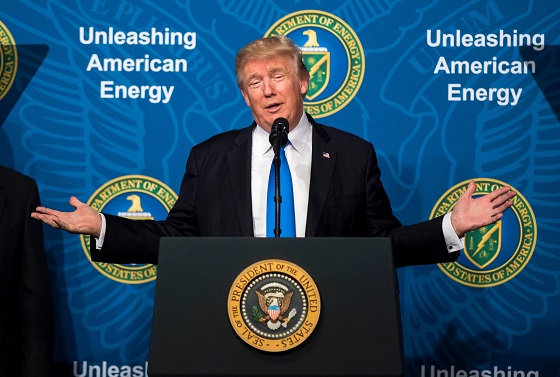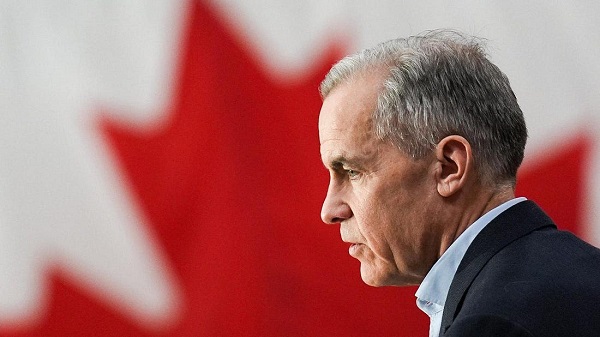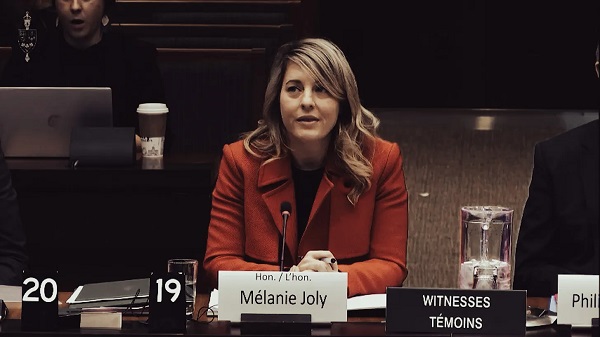Energy
Canada’s LNG breakthrough must be just the beginning

This article supplied by Troy Media.
 By Lisa Baiton
By Lisa Baiton
Without decisive action, Canada risks missing out on a generational opportunity
For decades, Canada has relied almost exclusively on the United States to buy our natural gas exports. We are one of the world’s top natural gas exporters, selling nearly half of our total natural gas production each year, but about 99 percent of those exports go to a single customer south of
our border.
This trading relationship has been reliable, even though it has meant selling our natural gas at a lower price. But things are changing.
A good business has more than one customer, and over the past decade our biggest customer has become the largest Liquefied Natural Gas (LNG) exporter on the planet.
But Canada has taken a major step forward. LNG Canada’s first shipment to international markets marks a historic breakthrough—it’s the country’s largest private investment and puts Canada on the map as a global supplier of LNG.
This achievement deserves celebration. It demonstrates that Canada can build and deliver major energy infrastructure, unlocking economic opportunities for Indigenous Nations, British Columbians, and Canadians across the country. Just as the TransMountain pipeline expansion diversified our global customer base boosted our GDP, and enabled production growth, LNG exports can do for our natural gas sector. Natural gas royalties from LNG Canada alone are projected to contribute $23 billion to British Columbia’s government over its 40-year lifespan. Building a facility of similar scale to LNG Canada is estimated to create over 35,000 jobs during construction and add up to $4.5 billion to our national GDP annually. It’s a glimpse of what’s possible.
But we can’t stop here.
Without decisive action to scale up LNG, Canada risks missing out on a generational opportunity to secure economic sovereignty and meet rising global energy demand.
Global demand for LNG is surging. Shell forecasts a 60 per cent increase by 2040, driven by Asian economic growth, the decarbonization of heavy industry and transport, and new energy demands from artificial intelligence. Most G7 leaders have called for a full ban on Russian energy imports, and countries around the world are actively seeking secure, stable suppliers. Canada, as the fourth-largest oil producer and fifth-largest natural gas producer, is well-positioned to help fill that gap.
So why haven’t we? Despite our resource wealth, Canada lags on infrastructure and policy. While others sprint for global contracts, we’re stuck in red tape. Our permitting system is slow, uncertain, and hostile to investment. That must change.
The government’s two-year approval target is a step forward, as is the recent work our Prime Minister and Energy Minister Hodgson are doing to promote energy trade in Poland and Germany, including LNG. But deeper reforms are needed to create a clear, competitive, investor-friendly system that accelerates development.
We must also prioritize infrastructure investment. With strategic investments in pipelines, LNG terminals, and port capacity, we can connect our vast natural gas reserves to highdemand markets across Asia, Europe, and beyond.
Equally crucial is diversification. The U.S. will remain a vital customer, but relying on one market is no longer tenable. Japan, Europe, and emerging Asian economies are actively seeking partners—and Canada must be ready to meet them with reliable supplies and long-term contracts.
Indigenous participation will be key to success. Canada’s emerging LNG export industry is demonstrating what’s possible with the Haisla Nation’s Cedar LNG, the world’s first Indigenous majority-owned LNG project, along with Woodfibre LNG being advanced in partnership with the Squamish Nation, and Ksi Lisims LNG being co-developed with the Nisga’a Nation. Expanding the LNG sector offers an opportunity to advance reconciliation meaningfully, through ownership, jobs, and long-term prosperity.
This is a pivotal moment. The first phase of LNG Canada must be just the start. The world needs our energy. It’s time to deliver.
Lisa Baiton is the president and CEO of the Canadian Association of Petroleum Producers
Troy Media empowers Canadian community news outlets by providing independent, insightful analysis and commentary. Our mission is to support local media in helping Canadians stay informed and engaged by delivering reliable content that strengthens community connections and deepens understanding across the country.
Daily Caller
US Eating Canada’s Lunch While Liberals Stall – Trump Admin Announces Record-Shattering Energy Report


From the Daily Caller News Foundation
By Audrey Streb
The Department of Energy (DOE) touted a report on Wednesday which states that America broke records in liquefied natural gas (LNG) exports.
The U.S. became the first country to export over 10 million metric tonnes of LNG in one month in October, Reuters reported on Monday, citing preliminary data from the financial firm LSEG. The DOE posted on X on Wednesday that “there are big opportunities ahead for U.S. natural gas” and has consistently championed LNG in a sharp departure from former President Joe Biden’s crackdown on the resource.
“The fact that America’s oil and gas industry was able to pass this stunning milestone is impressive considering all the roadblocks to progress which were thrown up by the Biden administration,” David Blackmon, an energy and policy writer who spent 40 years in the oil and gas business, told the Daily Caller News Foundation. “It is a testament to both the resilience and innovative mindset of the industry and to the phenomenal wealth of America’s natural gas resource.”
Dear Readers:
As a nonprofit, we are dependent on the generosity of our readers.
Please consider making a small donation of any amount here.
Thank you!
🗣️RECORD BREAKING: For the first time, U.S. LNG exports are projected to surpass 10 million metric tons in a single month. There are big opportunities ahead for U.S. natural gas!
— U.S. Department of Energy (@ENERGY) November 5, 2025
Two facilities in Louisiana and Texas are responsible for the LNG export surge, according to Reuters. The U.S. LNG industry emerged as an energy sector giant in recent decades, with America now leading the world in LNG exports after being projected to be a net importer as late as 2010, according to S&P Global.
The Biden administration enacted a freeze on new LNG export permits and “intentionally buried a lot of data and released a skewed study to discredit the benefits of American LNG,” the DCNF previously reported. The environmental lobby applauded Biden’s January 2024 freeze on new LNG export terminals, though critics argued that the policy stalled investment, would not reduce emissions and undermined America’s global strategic interests.
In contrast, President Donald Trump sought opportunities to bolster LNG and reversed the new permit pause through a day-one executive order. Some energy policy experts told the DCNF that the reported milestone highlights the resiliency of the industry and the benefit of Trump’s “American energy dominance” agenda.
Energy
Eby should put up, shut up, or pay up

Despite the state of our economy and the ongoing threat of U.S. tariffs, NDP BC Premier David Eby says he will not support a new pipeline from Alberta.
Has he not learned from the Trans Mountain pipeline fiasco, which has cost taxpayers close to $50 billion because of the antics of the BC NDP government?
Dan McTeague says Eby should either put up, shut up, or pay up.
-

 Business2 days ago
Business2 days agoTrump’s Tariffs Have Not Caused Economy To Collapse
-

 Alberta1 day ago
Alberta1 day agoAlberta government’s plan will improve access to MRIs and CT scans
-

 Daily Caller2 days ago
Daily Caller2 days agoTrump Reportedly Planning Ground Troops, Drone Strikes On Cartels In Mexico
-

 Brownstone Institute2 days ago
Brownstone Institute2 days agoBizarre Decisions about Nicotine Pouches Lead to the Wrong Products on Shelves
-

 International2 days ago
International2 days agoHours after Trump’s warning, Nigerian Christians massacred by Islamist gunmen
-

 Economy1 day ago
Economy1 day agoWelcome to the Energy Humanist Club! Bill Gates breaks the moral monopoly against fossil fuels
-

 Business1 day ago
Business1 day agoCarney government’s first budget should signal end to crippling ‘climate’ policies
-

 Business1 day ago
Business1 day agoNo Jobs Clause: Liberals Under Fire Over Stellantis Deal in Fiery Committee Showdown











